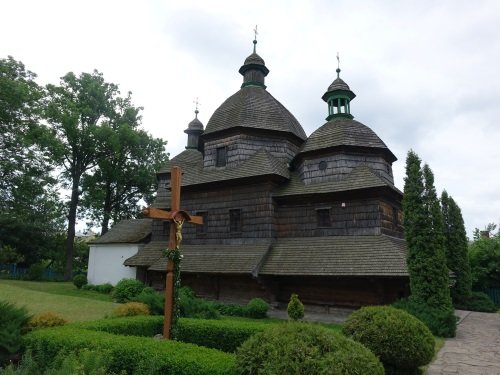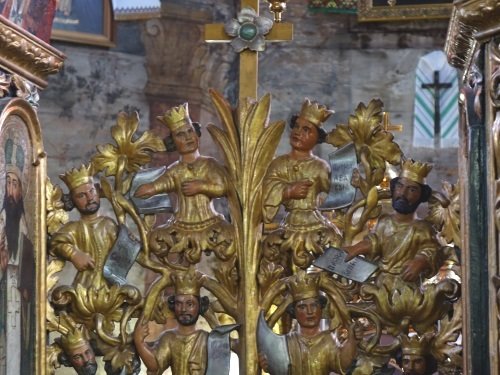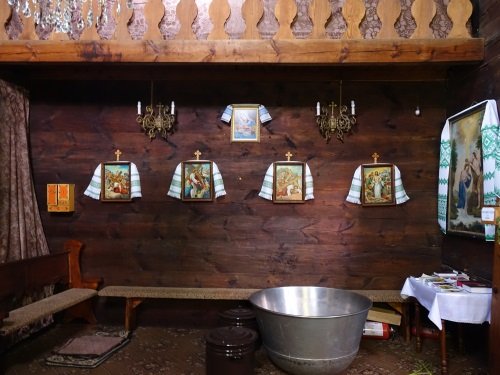The
Wooden Tserkvas
in the Polish part of the Carpathians have already been well-covered by the reviewers active on this website. I visited 6 of them myself in 2015. However, 8 of the inscribed tserkvas (churches) lie just across the border in Ukraine. Noone wrote a report on one of those yet. As I had half a day to spare after visiting
L’viv
, I hired a taxi to take me to the wooden Holy Trinity Church in Zhovkva – part of the Later Halych Group of the inscribed Ukrainian tserkvas.

Holy Trinity Church in Zhovkva
Zhovkva is a town of 13,000 inhabitants, about 30km northwest of L’viv. The drive takes just half an hour and doesn’t bring very remarkable scenery. The roads out of L’viv are potholed, many of the streets leading from the main streets into villages are still unpaved. Inspired by the Polish churches which lie in sometimes idyllic rural settings, I hoped to get a glimpse of the Ukrainian countryside by going to Zhovkva. It didn’t turn out to be that way however.
The Holy Trinity Church lies beside the main road that leads from L’viv to Zhovkva city center. I had brought a print with me including the name of the church in Ukrainian and a picture of it, just to be sure. But it cannot be overlooked, and is even signposted in English with the same type of bilingual signs that point to the various sights in L’viv. It looks a bit out of place in its suburban setting, but the specific type of wooden construction and good state of conservation made me glad that I had taken this sidetrip. The church dates from 1720.

Part of the impressive iconostasis
I would have been reasonably content admiring the tripartite church from the outside, but the icing on the cake of course would be to get in. Just as with the Polish churches, I found a phone number attached to the front door to call for someone with the key. Fortunately I did not have to ask my hesitantly German-speaking driver to make the phone call for me in Ukrainian: the door was open and two men were already inside – probably cleaning away after Sunday’s service.
The building is nowadays used by the
Ukrainian Greek Catholic church
. The lay-out of the church is quite similar to that of the other tserkvas: one enters via the narthex (featuring a bunch of brochures and what may be a baptismal font), reaches the nave annex choir and it all ends at the iconostasis. There isn’t space for many churchgoers: five rows of benches are placed on each side. However, this tserkva has a choir loft worthy of a much larger church. This is all decorated with many icons, paintings and the lovely iconostasis - “The interior furnishings survive intact, offering the best example of the integral interior design of an 18th-century tserkva”, according to the nomination file. Odd addition to this wooden structure is the white brick sacristy, which also dates from the 18th century.

Baptismal font?
After a while the priest, who had been working in the sacristy behind the iconostasis, came to greet me. He asked whether I was Polish – most tourists that come here are. Unfortunately he didn’t speak more than a word or two in English and German, but he was obviously proud of his little church. The written Unesco inscription certificate has been prominently nailed to one of the walls, amidst the paintings of saints.



